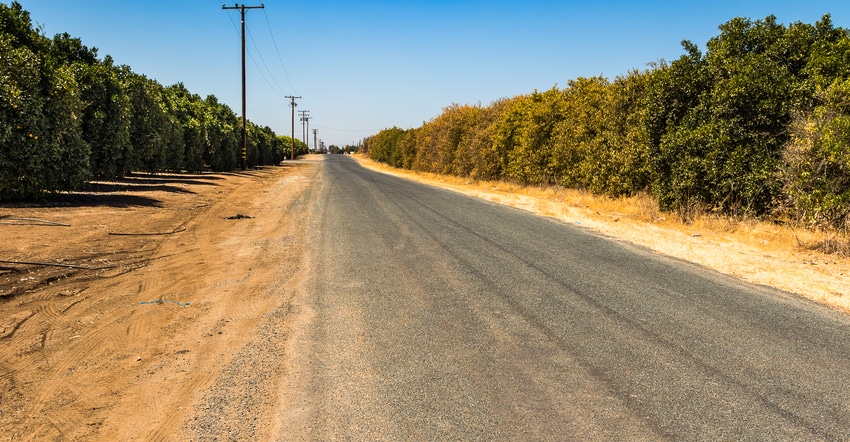September 21, 2018

Tulare County, Calif. officials are trying to prevent the deadly citrus disease called Huanglongbing (HLB) from gaining a toe-hold in the region through abatement efforts targeting neglected and abandoned citrus groves.
Dead and dying citrus trees can be found next to the Sierra Nevada foothills on the county’s east side – predominantly in the same areas impacted by drought and the loss of irrigation wells near the communities of Porterville and Terra Bella. The county’s goal is to remove unattended orchards, thereby preventing the possibility of a disease reservoir building near commercial citrus groves.
So far, the county’s efforts appear fruitful.
Assistant Agricultural Commissioner Tom Tucker, who oversees the program, began the abatement program late last year after securing permission from county supervisors to build the program. Legally the county’s agriculture department needed permission for the county’s legal department to defend the agency in abatement proceedings. Money was also needed to cover tree removal costs for those property owners who failed to remove trees. Supervisors gave the county agriculture department $250,000 to cover orchard removals as necessary.
Though citrus trees need ample water to produce fruit, they don’t need much to occasionally produce new shoots or leaves, which entomologists say can be just enough to attract an Asian citrus psyllid looking for a place to lay eggs.
“The problem is some of these trees don’t truly die, especially if they can find any source of moisture at all,” says Marilyn Wright, Tulare County Ag Commissioner.
Tucker has been successful in getting property owners with abandoned groves to remove their trees. To date 34 properties with 400 acres of dead and dying citrus trees have been removed by property owners.
“I work with the property owners any way I can to get these trees removed as quickly as possible,” Tucker said.
Though Tulare County has the ACP, populations remain low and none of the insects collected that could be tested have come back positive with the bacterium that causes HLB. Infected insects must feed on citrus trees to transmit the disease, but once a tree is infected, any ACP feeding on that infected part of the tree can then transmit the disease to other trees.
“I’ve got a lot of positive feedback on this program,” Tucker says.
Still, some property owners have been “a little difficult,” Tucker says, adding that the county could move forward with legal abatement proceedings against those property owners if they don’t elect to remove the dead and dying citrus trees.
This is where the pool of money supervisors approved last year comes into play. In an abatement, the county will remove the trees, then attach a lien on the property to recover its costs.
“So far, we’ve not had to do that,” Tucker said.
You May Also Like




